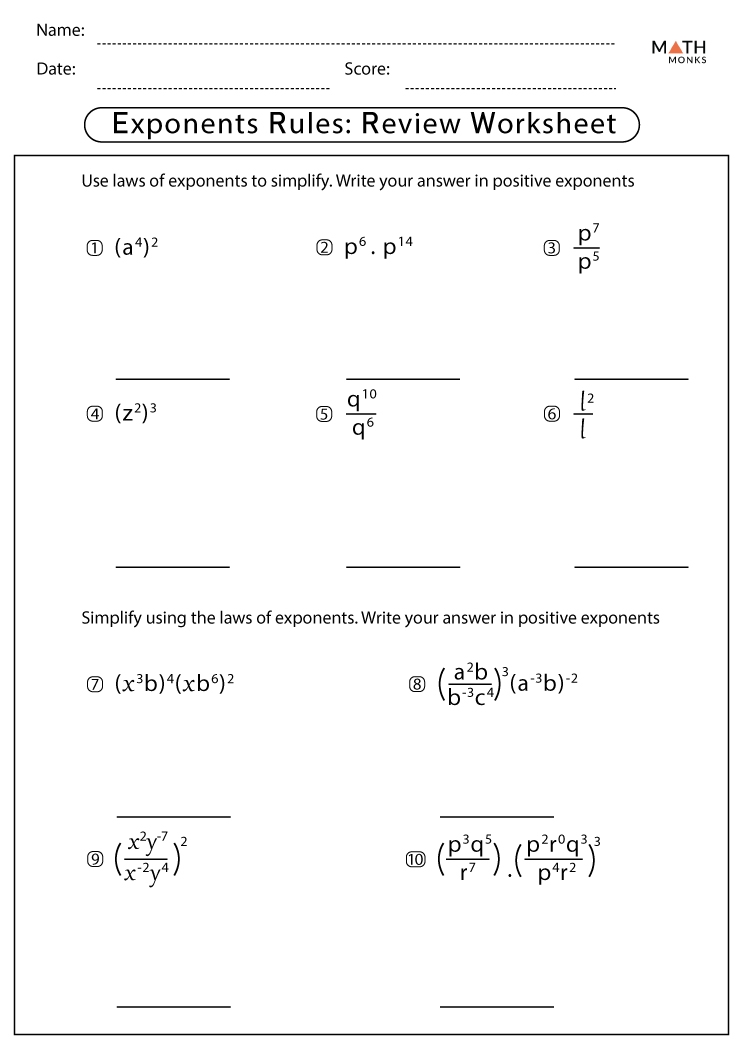Exponents are a fundamental concept in algebra and understanding the rules of exponents is essential for simplifying expressions and solving equations. A rules of exponents worksheet is a great way for students to practice and reinforce these rules through various exercises and problems.
By practicing with a rules of exponents worksheet, students can improve their understanding of how exponents work and gain confidence in applying these rules to different types of expressions. This practice is crucial for success in more advanced math courses and standardized tests.
Rules of Exponents Worksheet
One of the basic rules of exponents is the product rule, which states that when multiplying two terms with the same base, you can add the exponents. For example, (x^2) * (x^3) = x^(2+3) = x^5. This rule is essential for simplifying expressions and combining like terms.
Another important rule is the power rule, which states that when raising an exponential term to another power, you multiply the exponents. For example, (x^3)^2 = x^(3*2) = x^6. This rule is useful for simplifying expressions with multiple exponents.
Additionally, the quotient rule states that when dividing two terms with the same base, you subtract the exponents. For example, (x^5) / (x^2) = x^(5-2) = x^3. This rule is helpful for simplifying fractions and solving equations involving exponents.
It is also important to remember the zero and negative exponent rules. Any base raised to the power of zero is equal to 1, and a negative exponent indicates the reciprocal of the base raised to the positive exponent. These rules are crucial for understanding the behavior of exponents in different contexts.
Overall, a rules of exponents worksheet provides valuable practice and reinforcement of these fundamental rules, helping students master the concepts and improve their problem-solving skills. By working through various exercises and problems, students can build confidence in their abilities and excel in their math studies.
